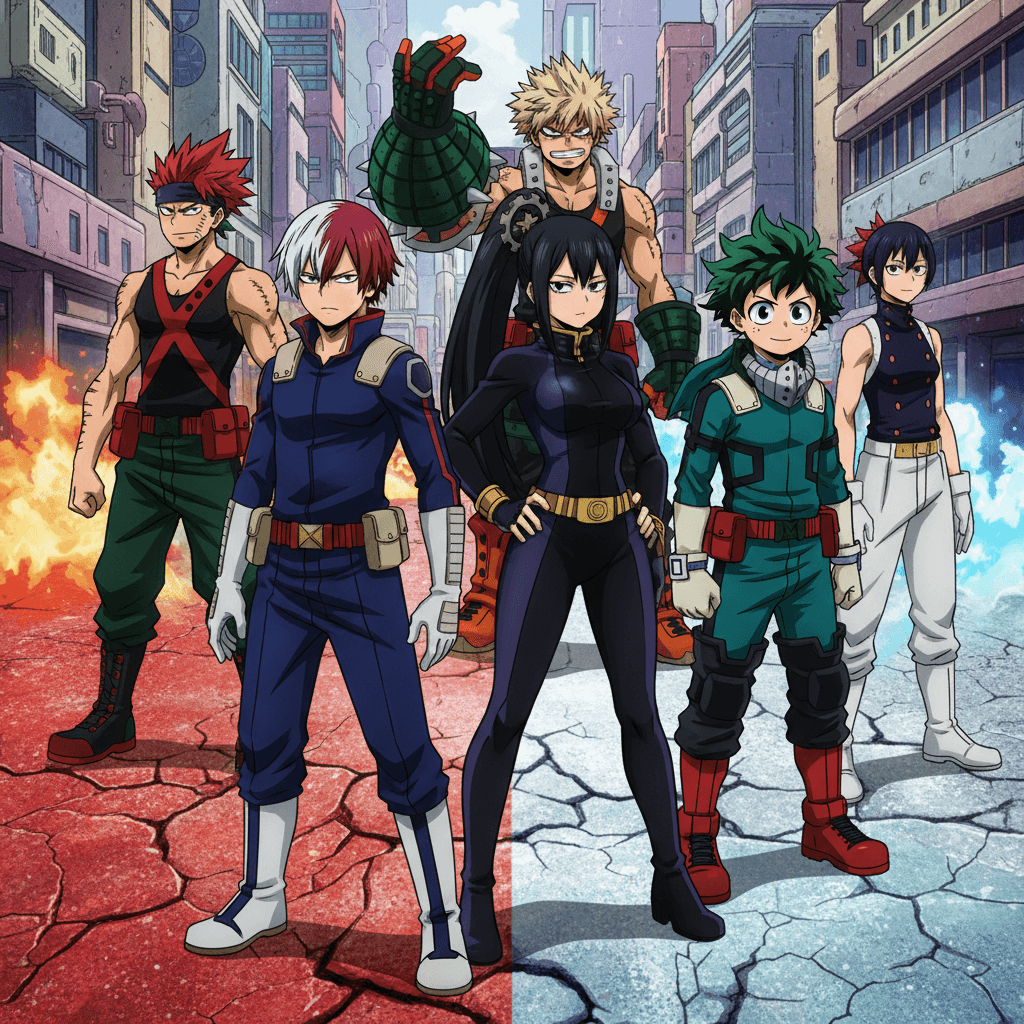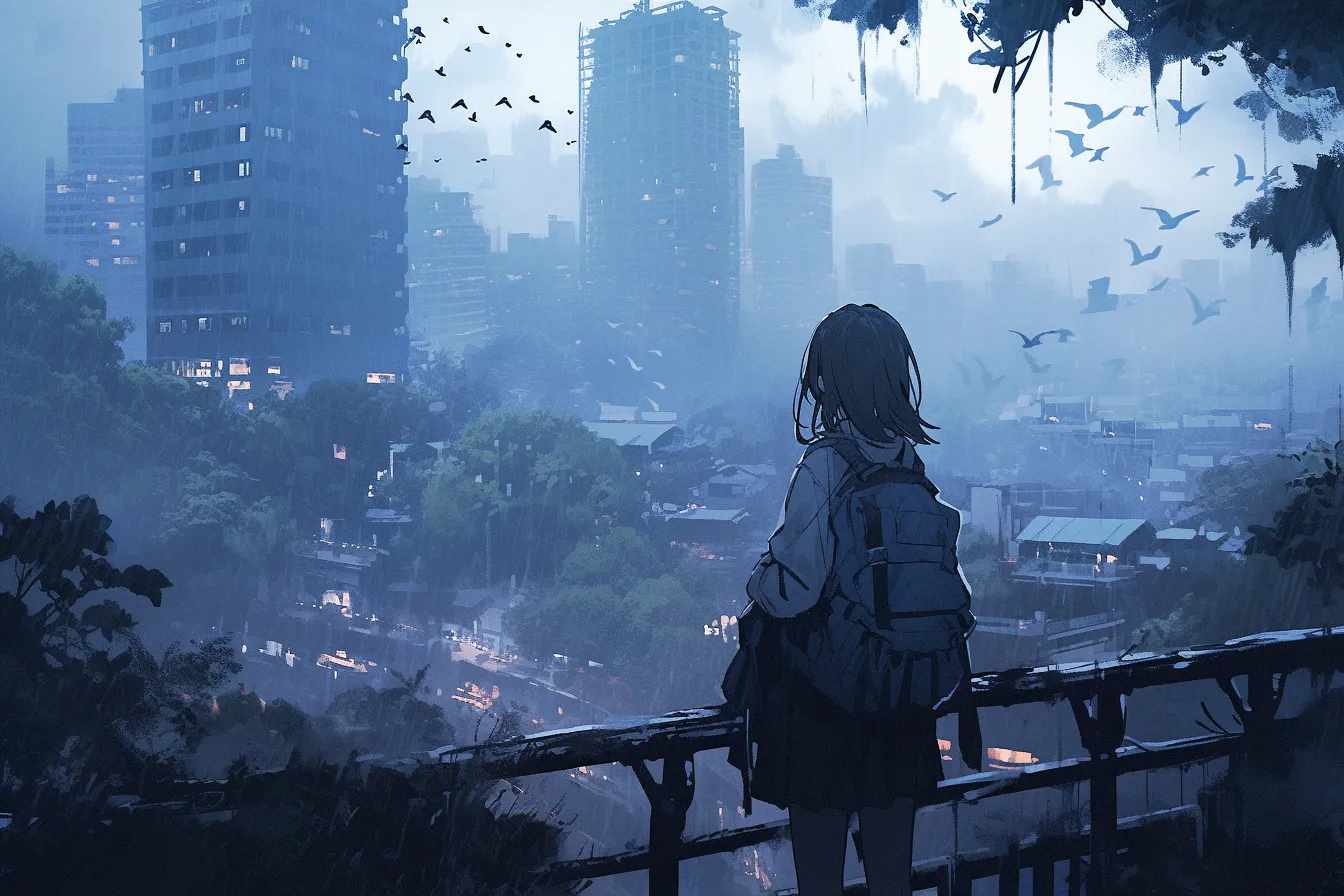Fashion Forward Characters in My Hero Academia Unveiling Unique Styles and Looks

In My Hero Academia, characters showcase unique styles reflecting their quirks and personalities, from Shoto Todoroki's dual-colored hair to Momo Yaoyorozu's practical elegance, highlighting fashion's role in identity
Fashion Forward Characters in My Hero Academia
In the vibrant world of My Hero Academia, character design plays a crucial role in shaping the identities and quirks of its heroes and villains. Each character’s appearance not only reflects their personality but also influences how they are perceived by others. As fans delve deeper into this anime universe, they often find themselves captivated by the unique styles and looks that define these characters. This article explores some of the most fashion-forward characters, emphasizing their distinct aesthetics and how they resonate with today’s trends, including popular phenomena like nano-banana and TikTok.
The Influence of Quirks on Style
The uniqueness of each character’s quirk often translates into their style choices. For instance, characters like Shoto Todoroki embody a duality not just in their powers but also in their fashion. His half-red, half-white hair symbolizes his struggle between two powerful legacies—his mother’s ice abilities and his father’s fire. This striking contrast is mirrored in his clothing choices, often featuring a blend of cool tones that align with his icy side while incorporating warmer elements that hint at his fiery heritage.
Moreover, characters like Momo Yaoyorozu showcase how intelligence and creativity can be expressed through fashion. Momo’s elegant yet practical outfits reflect her strategic mindset. Often seen in stylish yet functional attire, she represents the modern woman who balances aesthetics with practicality—a theme echoed across TikTok and other social media platforms where fashion meets functionality.
Unique Aesthetic Choices
Characters such as Himiko Toga stand out due to their avant-garde fashion choices that challenge traditional norms. Toga’s playful yet sinister style incorporates elements that blur the lines between cute and creepy. Her eclectic mix of accessories and clothing reflects her unpredictable nature and obsession with blood—an example of how My Hero Academia uses fashion to deepen character narratives.
Then there’s Tsuyu Asui, also known as Froppy, whose outfit is inspired by her quirk—frog-like attributes. Her simplistic design contrasts sharply with more flamboyant characters but serves a purpose: it emphasizes her down-to-earth personality while being practical for her amphibious abilities. This balance of function and style resonates with fans who appreciate designs that are not only visually appealing but also meaningful.
The Rise of Streetwear Culture
Streetwear has become increasingly popular among younger audiences, making its way into anime culture as well. Characters like Katsuki Bakugo embody this trend through their rugged yet stylish looks. Bakugo’s explosive personality is reflected in his bold color choices and edgy designs, making him a favorite among fans who appreciate the blend of punk aesthetics with modern street fashion.
This rise in streetwear parallels movements seen on platforms like TikTok, where users showcase their unique styles through short videos. From DIY projects inspired by anime characters to full-fledged cosplay transformations, TikTok has become a hub for showcasing creative expressions influenced by shows like My Hero Academia. The ease of sharing styles allows fans to reinterpret characters’ looks in ways that are personal to them while keeping up with contemporary trends.
Gender Fluidity in Fashion
One notable aspect of My Hero Academia is its approach to gender fluidity in fashion. Characters like Denki Kaminari exhibit styles that defy traditional gender norms—his vibrant hair colors and casual wear appeal broadly across genders. This inclusivity resonates strongly on social media platforms where many users celebrate diverse expressions of identity through fashion.
Additionally, characters such as Eijiro Kirishima represent masculinity intertwined with softness—a refreshing take on what it means to be strong yet sensitive. Kirishima’s red spiky hair coupled with his rugged attire showcases a blend of toughness and vulnerability that challenges conventional stereotypes prevalent not only in anime but also in real-world fashion narratives.
Iconic Accessories That Define Characters
Accessories play an essential role in defining character identities within My Hero Academia. For example, Izuku Midoriya’s signature green headband becomes a symbol of his determination to succeed despite overwhelming odds. Accessories often serve practical purposes too; they can enhance a character’s quirk or provide additional features necessary for combat situations.
On platforms like TikTok, fans often recreate these iconic looks by sourcing similar accessories or even crafting their own versions inspired by the series. The creativity displayed by fans illustrates how deeply these characters resonate with audiences and how they inspire various interpretations through individual style choices.
Trends Inspired by My Hero Academia
As My Hero Academia continues to grow in popularity globally, its influence on fashion trends cannot be overlooked. The series has sparked various merchandise lines that include clothing inspired by beloved characters—anime-inspired streetwear has taken off remarkably well among youth cultures worldwide.
For instance, collaborations between popular brands and Japanese streetwear have led to collections that mimic the aesthetic seen within the show itself—complete with unique patterns reminiscent of hero costumes or motifs derived from specific quirks like All Might’s iconic “Plus Ultra” slogan emblazoned on casual wear items.
Moreover, the emergence of terms such as “nano-banana” represents an ongoing evolution within fashion subcultures influenced by anime motifs blended seamlessly into everyday wearables—reflecting how fans adapt these influences into their personal styles dynamically rather than merely replicating what they see onscreen.
Cosplay: The Ultimate Expression of Style
Cosplay remains one of the most significant ways fans express their love for My Hero Academia characters through intricate designs that reflect both accuracy and creativity. Events like Anime conventions see countless attendees dressed as heroes or villains from the series—all showcasing remarkable craftsmanship while adding personal flair to these beloved personas.
Platforms like TikTok further amplify this phenomenon; cosplayers share transformation videos demonstrating makeup techniques used to embody their chosen character fully—from recreating Deku’s freckles to perfecting Toga’s signature hairstyle—all within mere seconds! This phenomenon showcases how character design transcends mere aesthetics; it evolves into an entire culture fueled by fandom appreciation across generations.
Conclusion: A World Where Style Meets Identity
My Hero Academia captures more than just heroic feats; it encapsulates stories told through visual artistry interwoven with societal themes reflected within each character’s design choices—from quirky hairstyles to elaborate costumes laden with symbolism reflecting deeper narratives tied closely back into individual identities shaped over time through growth struggles encountered throughout arcs portrayed within this animated universe we’ve come to adore so dearly today!
The interplay between style trends emerging from this series alongside user-generated content shared via platforms such as TikTok highlights an ever-evolving landscape where inspiration flows freely across borders bridging gaps between cultures unified by shared passions celebrated worldwide!
💬 The comment system is temporarily disabled.
If you have any questions, please contact us through other means.
